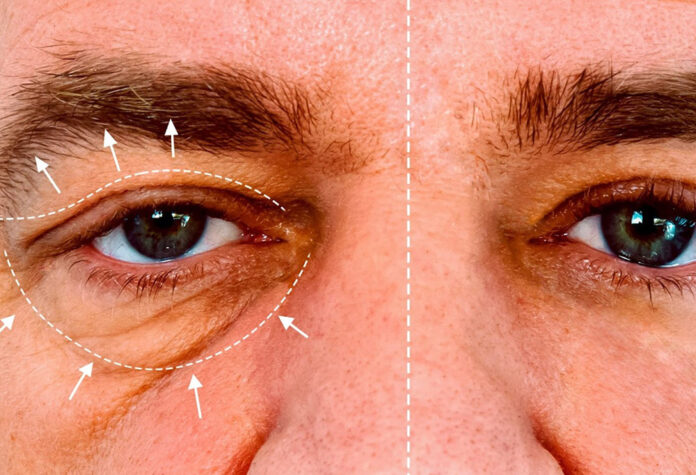Physical Side Effects of Botox
Botox is a popular cosmetic treatment used to reduce the appearance of wrinkles and fine lines. Injections of Botox, or botulinum toxin, temporarily paralyze the muscle beneath the skin, preventing it from contracting and creating wrinkles. While this approach has been successful in providing many people with smoother skin, it can also have physical side effects.
One of the most common physical side effects of botox is swelling or bruising around the injection site. This usually resolves within a few days and can be managed with cold compresses. Other side effects include headache, flu-like symptoms, nausea and temporary facial pain or numbness at the injection site.
Another risk associated with Botox injections is an allergic reaction to the toxin itself or one of its components. Symptoms may include rash, itching or hives on your skin that will typically resolve on their own within a few hours to days after treatment has stopped. It’s important to tell your doctor if you experience any signs of an allergic reaction so they can provide appropriate medical care if necessary. More serious complications are possible but rare when getting Botox injections; these include difficulty breathing or swallowing due to paralysis of muscles in those areas as well as facial drooping due to weakness in certain facial muscles.
Types of Side Effects
Side effects are a common occurrence for many people who take medications. They can range from minor, temporary issues to more serious, long-term problems. It is important to be aware of the possible side effects associated with any medication you may be taking so that you can identify and address them quickly. Here are some of the most common types of side effects:
- Gastrointestinal Side Effects: These types of side effects affect your digestive system and can include nausea, vomiting, constipation, diarrhea, and abdominal pain or discomfort. Fortunately, these usually go away after a few days of taking the medication and don’t require any special treatment.
- Skin Reactions: Some medications can cause rashes or other skin reactions such as itching or hives. If this happens to you while taking a certain medication it’s important to talk to your doctor right away as they may need to switch your prescription or provide a topical cream for relief if necessary.
- Eyesight Changes: Some drugs like beta-blockers used in treating high blood pressure have been known to cause blurred vision and light sensitivity in some patients who take them regularly over time – again this should be brought up with your doctor if it occurs so they can adjust.
Possible Allergic Reactions to Botox
Botox is one of the most popular cosmetic treatments available today. It is used to reduce wrinkles and can help to improve facial appearance. However, despite its popularity, it’s important to be aware that Botox injections come with the potential for allergic reactions.
The active ingredient in Botox is botulinum toxin type A, which has been linked to a number of allergic reactions. These reactions may present as skin rashes or hives, difficulty breathing, swollen face or eyes and itching or burning sensations. In severe cases, anaphylaxis can occur which requires medical attention immediately.
It’s important that you inform your doctor if you have any allergies before having a Botox treatment as this could increase your risk of experiencing an allergic reaction.
It’s also important for those considering Botox to be aware that although rare, it is possible for people who have never had any previous allergies to develop an allergy after being exposed to botulinum toxin type A through a Botox injection.
To reduce the risk of developing an allergic reaction from a Botox injection it’s recommended that patients research their practitioner carefully and ensure they are qualified and experienced in carrying out these types of treatments safely and effectively.
Long-term Side Effects of Botox Use
Botox is a popular cosmetic procedure used to reduce wrinkles and improve facial aesthetics. While it can provide immediate results, there are some potential long-term side effects associated with its use.
One of the most common long-term side effects of Botox is the development of resistance to its effects. Over time, patients may find that their Botox injections aren’t as effective as they once were, and they may need more frequent treatments to maintain their desired results. This is especially true for individuals who have had multiple sessions over a period of time.
Another possible long-term effect is drooping eyelids or eyebrows due to muscle weakness caused by repeated Botox injections in the same area over time. This can cause difficulty opening or closing one’s eyes completely, which can be both uncomfortable and dangerous if left untreated. Additionally, this condition could lead to vision problems if not corrected promptly with surgical intervention or other treatments such as fillers or volume restoration techniques.
Other potential long-term side effects include issues related to nerve damage caused by excessive doses of Botox or incorrect administration technique. These include numbness around the injection sites and muscle weakness in other areas due to diffusion of toxin into unintended muscles away from the injection site.
Conclusion
In conclusion, Botox has a variety of potential side effects. Most are mild, temporary and reversible, however serious and long-term side effects can occur. It is important to discuss all potential risks with your doctor before undergoing any type of treatment with Botox. While it is generally considered safe for most people, it should be used cautiously in patients with underlying medical conditions or allergies to certain ingredients in the product.
Write and Win: Participate in Creative writing Contest and win fabulous prizes.
















